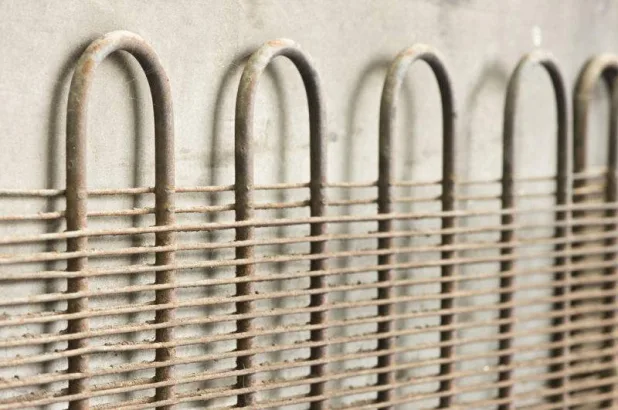What is pipe coiling?
Talking about pipe bending’s broad practice, it is crucial to understand that a considerable part of the activities ascribed to a particular part of the working process is pipe coiling.
This process involves bending tubes or pipes in spring-like shapes, transforming straight tubes and pipes into helical spirals that resemble kids’ toys that hop downward stairs. We find this delicate process to be useful in a large pool of industries.
Behind the process and how it’s done
Pipe coiling can be performed manually or computer-controlled, both producing very similar outcomes. Essential to this process are machines that are designed specifically for this purpose.
Depending on the desired outcome after the fabrication, there are several types of machines specialized in bending pipes and profiles, which we’ll discuss further in this article. The end-product spiral pipes and tubes can vary in diameter, length, helical pitch, and thickness.

The four most common pipe coiling machines
Nearly all kinds of pipe coiling machines employ hydraulics to operate and feature computer-controlled technology to maintain consistency and minimize human error risk. However, some types do require manual labor to function.
These machines are highly intricate, and they require trained professionals and dedicated personnel to operate them safely at high levels of effectiveness.
Most pipe bending is done by companies and services specialized in metal works and pipe bending services. But, investing in such machines isn’t a flawed business logic if you are undertaking a demanding project that would benefit from such production capacities. They also maintain a reasonable price on the used machinery market. The four most common pipe coiling machines include:
1. Spinning drum
A spinning drum is a straightforward machine mostly used for coiling smaller sized tubes and pipes. The spinning drum machine operates with the pipe positioned on the drum and then guided at an angle of 90 degrees by a separate roller, which bends the pipe into a spiral.

2. The three-roll bender
This machine is a bit more complicated than the spinning drum, consisting of three rolls, as suggested by its name. While the first two are used to guide the pipe or tube under the third roller, which bends the pipe or tube, in the meantime, two operators are required to administer lateral force that effectively forms the spiral.
3. Pitch rolling bender
Even though this machine operates similarly to the three-roll benders, it functions without manual operation, which is crucial to the three-roll bender. To compensate for the lack of manual labor, it uses more rollers to shape the spirals.
Different designs use a different number of rollers. This way, distinct variations of spiral shapes can be achieved. The machine thrusts the pipe through three rollers to bend it, while separate rollers bend it laterally, creating a pipe coiling spiral.
4. Two-disc coil bender
Somewhat similar to the spinning drum, the two-disc coil bender is designed to bend longer pipes and tubes. It uses a spindle around which the pipe is wrapped around, while separate rollers guide it to form a spiral.
Suitable pipes for coiling
Any malleable tubing, including steel, galvanized steel, stainless steel, copper, and aluminum, will probably be coiled. Depending on the application, pipes can vary from less than 25 mm in diameter to several centimeters.
It is possible to coil virtually any length of tubing. It is possible to coil both thin-wall and thick-wall tubing. Depending on the available equipment and specifications of the individual application, coils are available in flat or pancake forms, single helices, dual helices, nested coils, continuous pipe spools, and many other variations.
Application of pipe coiling fabrications in several key industries
As we indicated in the introduction, there are many coiled piping and pipe coiling applications across many different sectors and industries. The four most notable include the air conditioning and refrigerating industry, distilling industry, and oil and gas industry.
1. Air conditioning and refrigerating industries
Air conditioning and refrigerating industries are highly dependent on coiled piping since it is heavily used as a heat exchanger.
Helically spiral pipe offers a much greater surface area than serpentine pipe bends or standard straight pipe to effectively boost the heat exchange process between the refrigerant within the pipe and the air or ground around the pipe.
For the air conditioning application, the evaporator system involves coiled pipes within the air conditioning system. The ground loop is also created using coiled piping if you use a geothermal system since it doesn’t take up as much room as different tubing.

2. Distilling industry
Distilleries will require coiled piping systems if they distill vodka or whiskey liquor. Essentially, the unclean fermented mixture is heated during the distillation process before the alcohol begins to vaporize or boil.
The alcohol vapor is isolated from the water vapor and condensed into purified alcohol through a coiled pipe in a cold water tank where the vapor cools and condenses. The spiral pipe is called the worm in this application, and it is also made from copper.

3. Oil and gas industry
Coiled piping is particularly utilized in the oil and gas industry. The most common usage is circulation or denitrification. Due to its weight (the well is said to have been killed), a hydrostatic head (a column of fluid in the good bore) may inhibit the flow of fluids forming.
The safest (but unfortunately not the cheapest) option would be to use a gas, mostly nitrogen (often called a ‘nitrogen kick’), to circulate the fluid. It is also used in pumping, coiled tubing drilling, logging, perforating, and production.
Final thoughts
Pipe coiling is a significant service in many industries and across multiple sectors, so pipe bending machines’ demand is high and is expected to rise globally. As enterprises expand, develop, and transform, pipe coiling services will be in tall order, leading to an expansion in the market that should not be underestimated or overlooked.





Share Your Thoughts